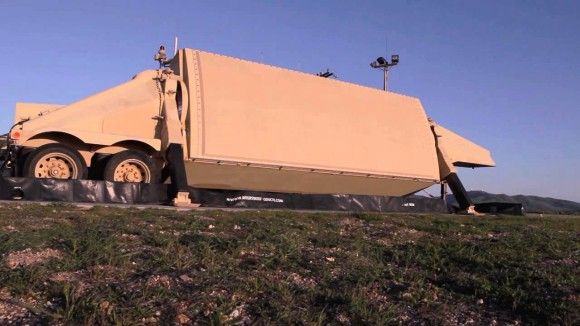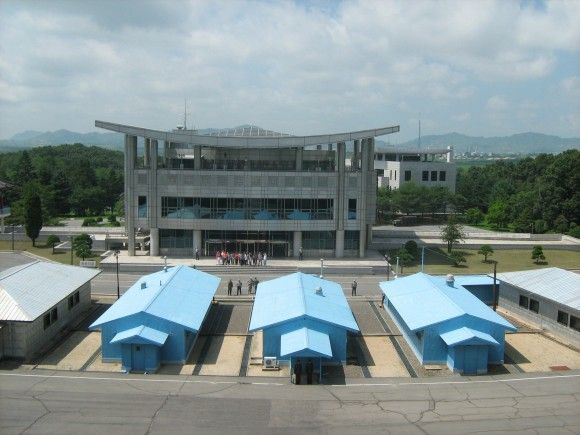Polish Protective Measures for the Territorial Defence Branch of the Polish Armed Forces
Recently, the Armament Inspectorate has placed an order, concerning procurement of more than 200 thousand pieces of the individual inventory for the soldiers, with the said equipment being expected to be received by the Territorial Defence component. The above-mentioned inventory is going to be delivered by the Maskpol company which is a part of the Polish Armaments Group.
The agreement signed in February 2017, the value of which has been defined as PLN 273 million, is one of the most significant procurement contracts concerning the individual inventory kit used by the Polish troops. The scope of the contract concerns procurement of 77 thousand MP-6 gas masks, 79 thousand packages of FOO-1 suits, and 79 thousand NO-1 protective mantles.
The said kit is to be delivered for the Polish Army between 2017 and 2022. The scope of the order is tied to provision of modern protective equipment, both for the existing units, as well as for the newly created Territorial Defence branch. According to the assumptions made by the Ministry, the new branch of the Armed Forces shall be fully equipped with individual kits equivalent to the latest types operated by the regular units.
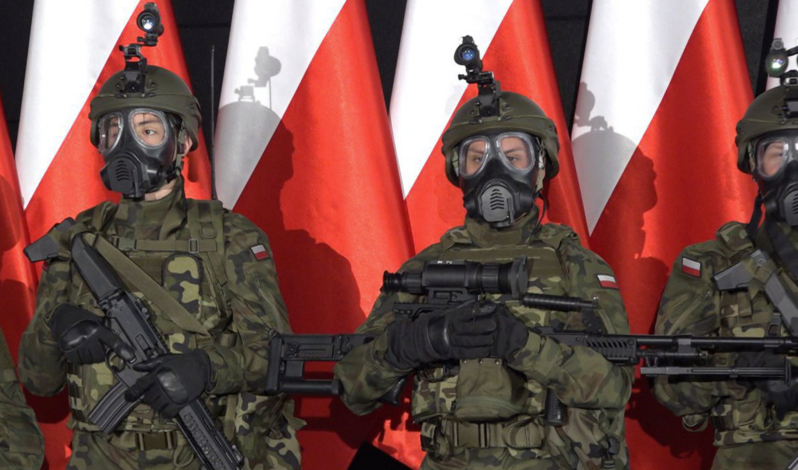
As we were told by General Wiesław Kukuła (commander of the Territorial Defence component of the Polish Armed Forces), in an interview, introduction of the new equipment is to facilitate training and makes it possible to diminish the cost of maintaining the equipment remaining in use. Moreover, the obsolete equipment withdrawn from the land forces would have to be, in a longer run, replaced, while the adopted solution makes it possible to unify the individual equipment packages.
Within the framework of the contract, the Armed Forces (including the Territorial Defence component) would receive, among other hardware, 77 thousand examples of the MP-6 gas mask. At the moment, a major quantity of these masks is being currently used by the Army. They are also yet another iteration of the protective equipment, introduced into use by Maskpol. Before that, the Army, Civil Defence units or the Police had been all receiving the older MP-4 gas masks.
In comparison with the MP-5 masks that had been utilized previously, MP-6s are characterized by an option to attach filtering element on the left- or right-hand side of the mask This provides the user with a greater degree of comfort and ergonomics, when using the mask in conjunction with firearms. The mask features two polycarbonate visors with an option of attaching extra filters to them, protecting the user from laser radiation. The glass is fragmentation resistant (V50) at the level of 215 metres per second.
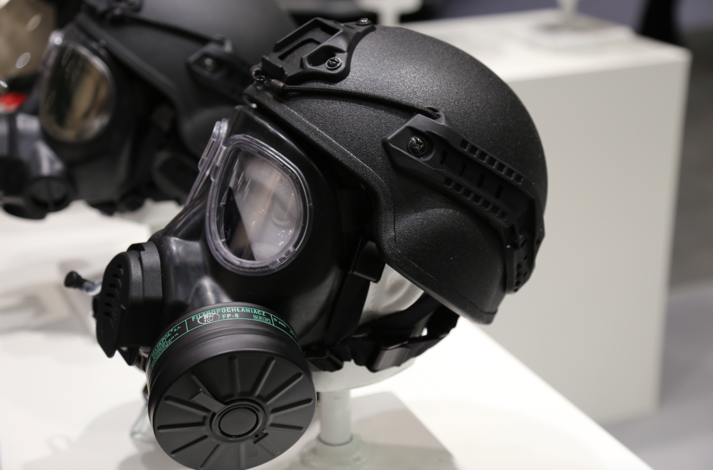
According to the declarations made by the manufacturer, the mask fully protects the airways from any impact that chemical, biological and radioactive factors could have on them. The mask is also standard-fitted with a device allowing the soldier to drink from an externally attached bottle, with protection provided at the same time. MP-6 also features a phonic chamber. There is also an option of using two filters at once, which makes it possible to enhance the airflow. The mask is compliant with NATO and European EN-136 norms. MP-6 by Maskpol comes in three sizes, designed to be tightly sealed on a variety of faces.
MP-6 and similar masks are usually being used in conjunction with protective clothing covering the whole body, and providing proper protection from chemical, radioactive or biological contaminating agents in a form of liquids, aerosols, vapours and droplets. The agreement signed in February 2017 assumes that 79 thousand FOO-1 systems would be delivered, consisting of the following elements: hooded jacket, rubber shoes, rubber gloves, warming gloves, carrying bag and a carrying case.
The individual elements of the suit, included in the FOO-1 system consist of two layers, and include internal filtering layer and external layer, created out of uniform fabric coming in a water-resistant and fire-proof variety. The protective clothing may be used instead of standard field uniforms, placed directly on skin, underwear or on a tracksuit. The equipment fully protects the soldiers from chemical and biological contaminants. The clothes are available in six sizes, whereas FOO-1 footwear and gloves come in three sizes.
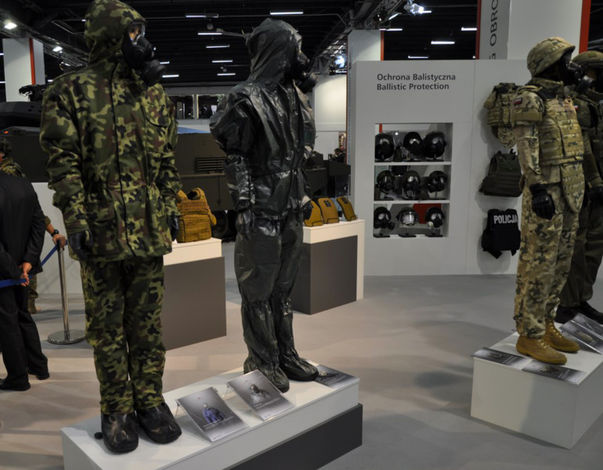
The whole kit is complemented with NO-1 protective mantles. These are single-piece cape-like clothes, fitted with a hood, protecting the soldier’s head. The design and protective properties of these allow the user to go into the contaminated zone and operate within it, also with use of armament and military equipment involved. They provide protection both from contamination caused by chemical or biological weapons, as well as by fallout or oil derivatives. The mantle may be donned when headgear and gas mask are already being worn by the soldier. Its weight, along with the packaging, depends on the size in which it comes, and it ranges from 0.49 to 0.54 kg.
It shall be noted that the ABC-protection measures shall remain not only at disposal of the Armed Forces, but also at disposal of widely understood Civil Defence units or uniformed services. Provision of access to such equipment also bears a significant meaning, also in a situation in which the civilians are in danger. Finally, the civilians shall be acquainted with the procedures of using the protective measures of any generation.
According to the assumptions made by the Ministry of Defence, individual measures for protection shall become, since the very beginning, an indispensable component of the equipment kit used by the Territorial Defence branch, this shall include bulletproof vests and composite headgear. Maskpol, acting as a part of the Polish Armaments Group, offers the PT-02 Plate Carrier vests, along with HA-03 headgear. The vests have been often demonstrated, also during the events organized to showcase the Territorial Defence concept, or during the presentations at the MoD.
Plate Carrier vests integrate the standard PALS/MOLL carrying systems with a modular ballistic protection system. The latter one is based upon four hard plates - two torso and two side plates, complemented with a package of sort inserts. There is an option to attach extra covers around the neck or groin areas.
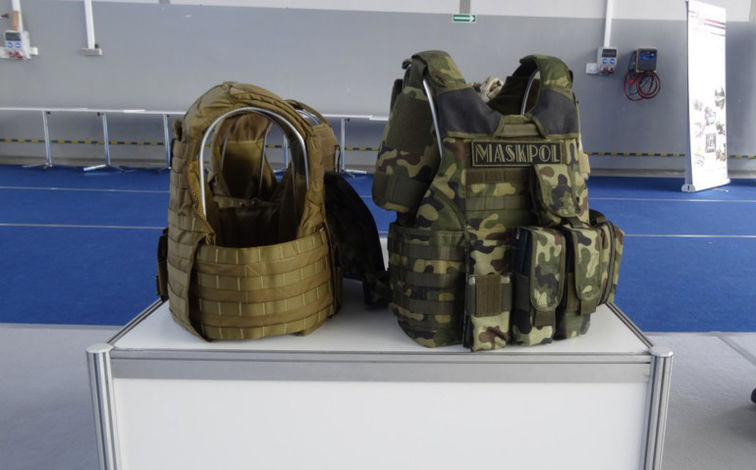
PT-02 has been fitted with a quick release system, allowing the user to get rid of it in emergency situations, e.g. when the soldier using the vest is receiving medical attention. Furthermore, rear rescue grip has also been embedded within the Maskpol’s product. The vest has been created out of Cordura 500D material. Its weight depends on the plates package, and it ranges from 6 to 11 kilograms.
The whole kit proposed by Maskpol is complemented with the HA-03 bulletproof headgear which, after the corrections were implemented in its case, has been now used by the air-mobile and airborne units. The design takes into account the necessity of working in conjunction with NVG systems or modern communications suite, thus the helmet also features side rails and an NVG mounting slot.
HA-03 also features a 4-point harness, internal cushions and back cushion with BOA adjustment system. The headgear described is characterized by V50 fragmentation resistance for standard 1.1 g fragments moving at speeds of 600 meters per second. Finally, the helmet may also stop 357 Magnum JSP 10.2 g bullet at 425 +/- 15 meters per seconds and 9x19 mm FMJ 8.0 g bullet at 360 +/- 15 meters per second.

